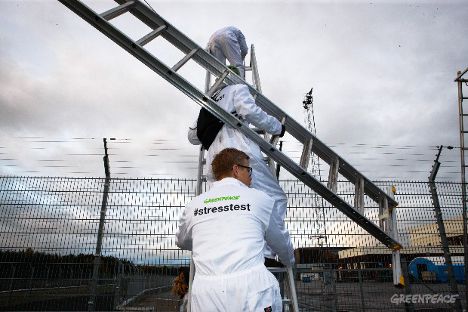Environment Minister Lena Ek condemned the environmental activists' actions after they managed to scale the fences to the nuclear park and climb atop one of the reactors.
"It's an illegal action and it costs society," Ek told the TT news agency.
A group of 20 activists breached the site at 7am on Wednesday. All are now suspected of aggravated breaking and entering, with an additional four suspected of aiding and abetting breaking and entering the premises.
Despite scaling three sets of fences with a ladder, the activists had posed no threat, said the Sweden's Radiation Safety Authority (Strålsäkerhetsmyndigheten – SSM), which added that the detection process for intruders had worked well.
"The most important thing is that reactor safety was never threatened," SSM control and protection unit head Christer Sandström told the TT news agency.
The park owners also appeared to remain sanguine about the intrusion.
"We'd be happy to have a dialogue with Greenpeace, but we think it's unnecessary to break the law to start a dialogue," said Anders Österberg, spokesman at the reactor park owner's OKG.
Greenpeace staged similar actions at the Swedish reactor parks Ringhals and Forsmark in 2012, which lead SMS to propose armed guards on site at the ten reactor parks across Sweden. The proposal was still under consideration when the last action took place.

Greenpeace activists enter the Forsmark site in 2012. Photo: Greenpeace
Greenpeace Sweden said the action at Oskarshamn was meant to highlight the dangers of ageing reactors.
"We have two of Europe's oldest reactors in Oskarshamn," Greenpeace head Annica Jacobsson told TT. "We know that ageing reactors bring with them serious risks."
The oldest reactor on site, the O1, was connected to the electricity grid in 1974. The second O2 reactor was plugged in two years later, in 1974.
The radiation authorities downplayed any immediate risk posed by the now decades-old reactors.
"All of the country's ten reactors have gone through or are going through large-scale modernization," SMS reactor security chief Lars Skånberg said. "We don't have any immediate safety problems today. And were we to detect such problems we'd close down the reactors immediately for repairs."


 Please whitelist us to continue reading.
Please whitelist us to continue reading.
Member comments